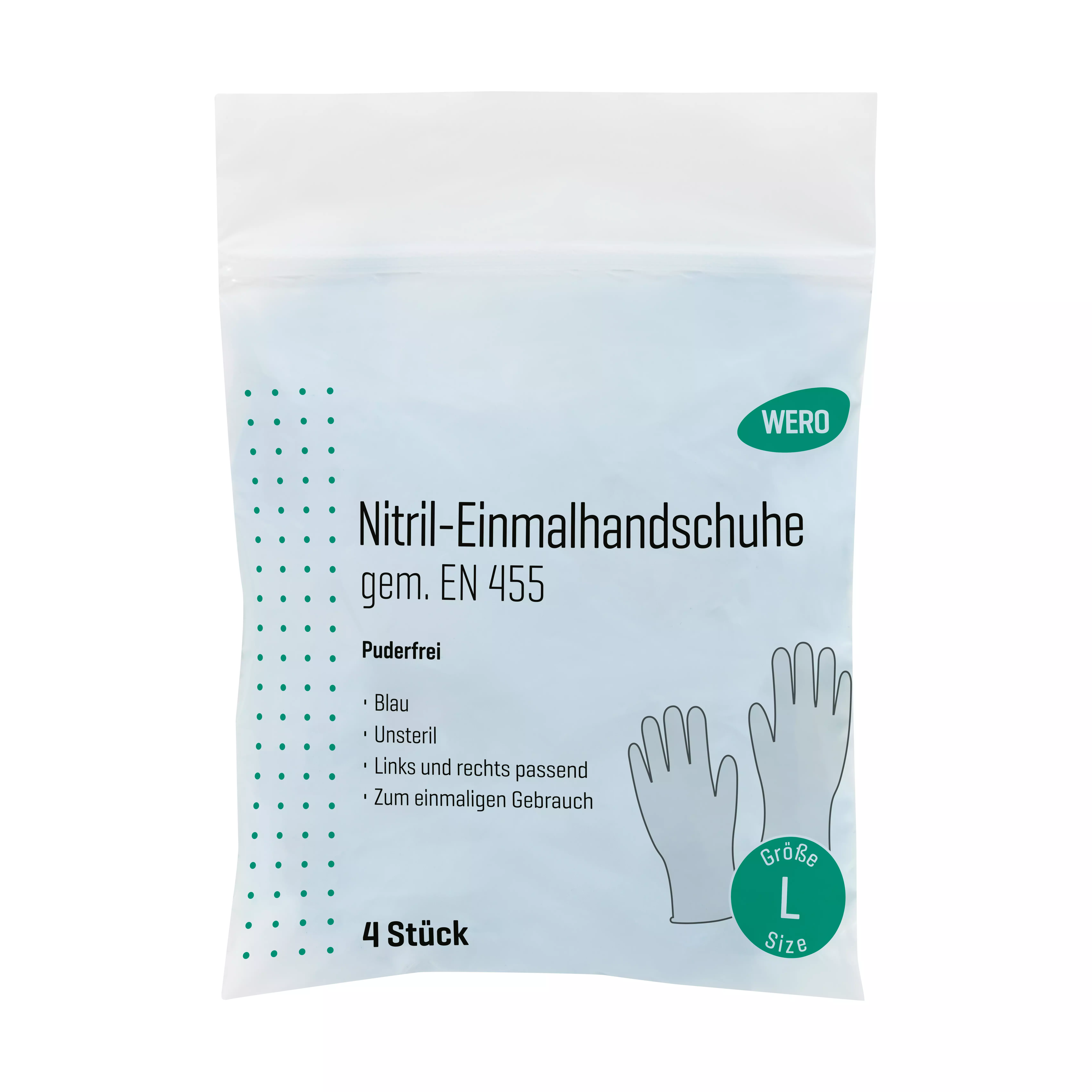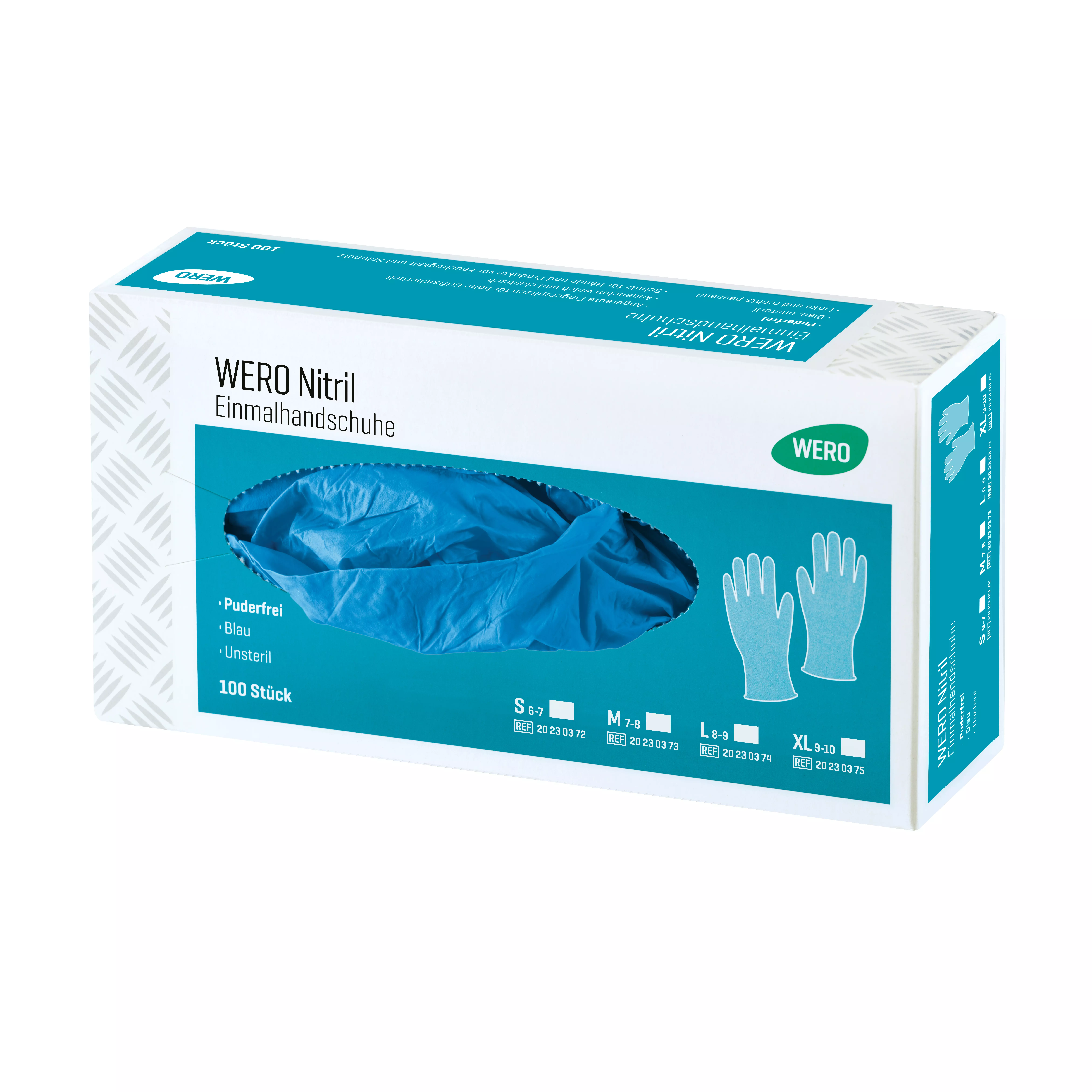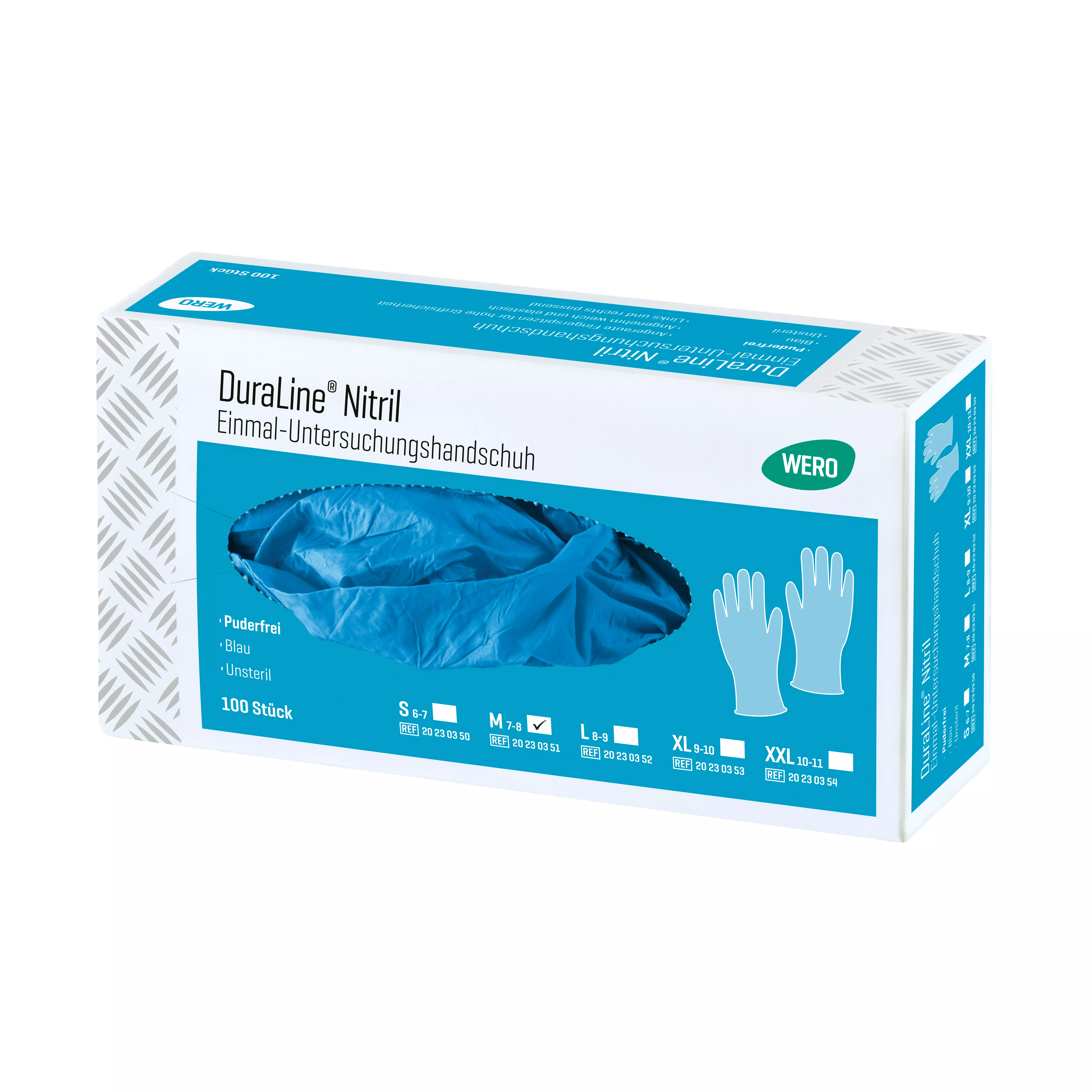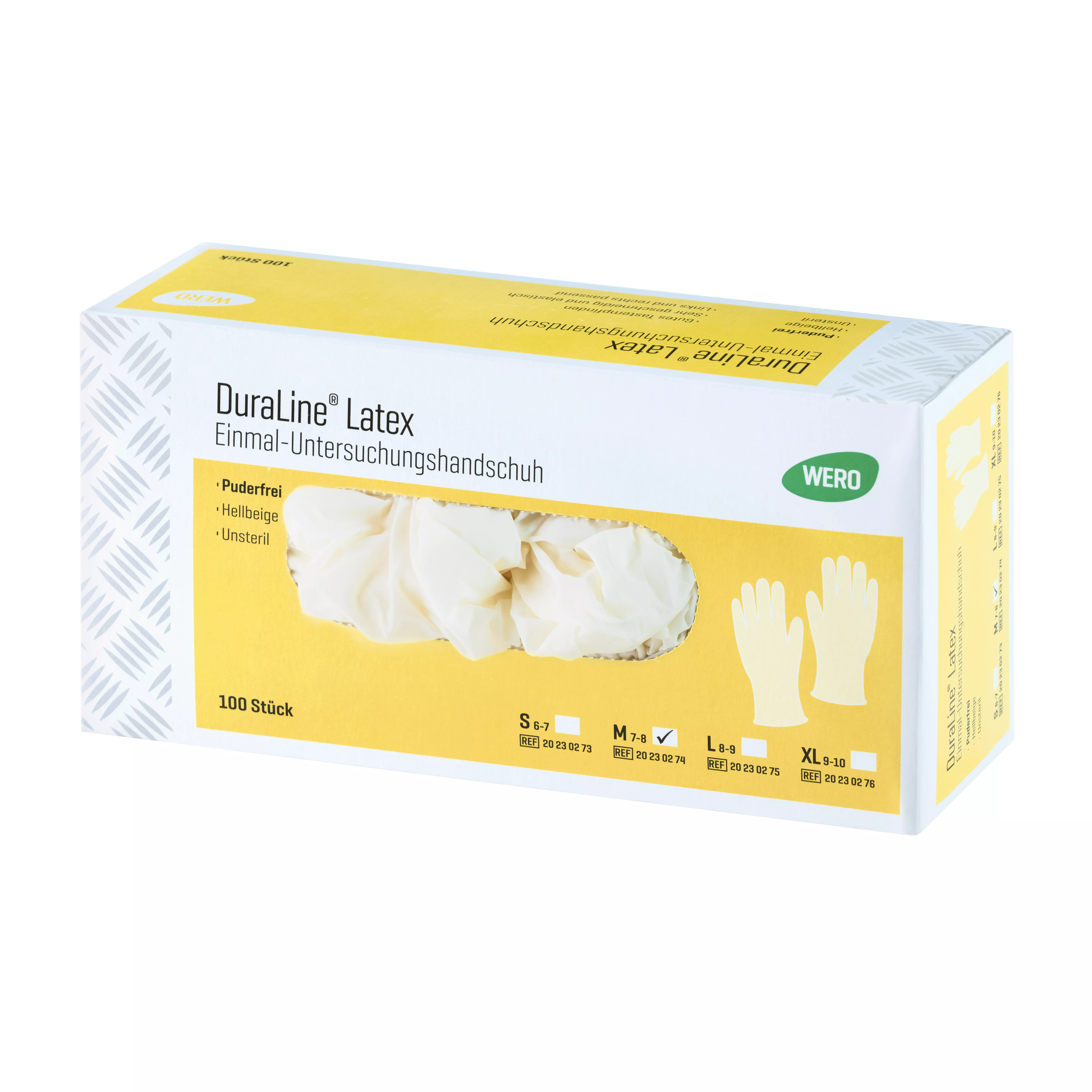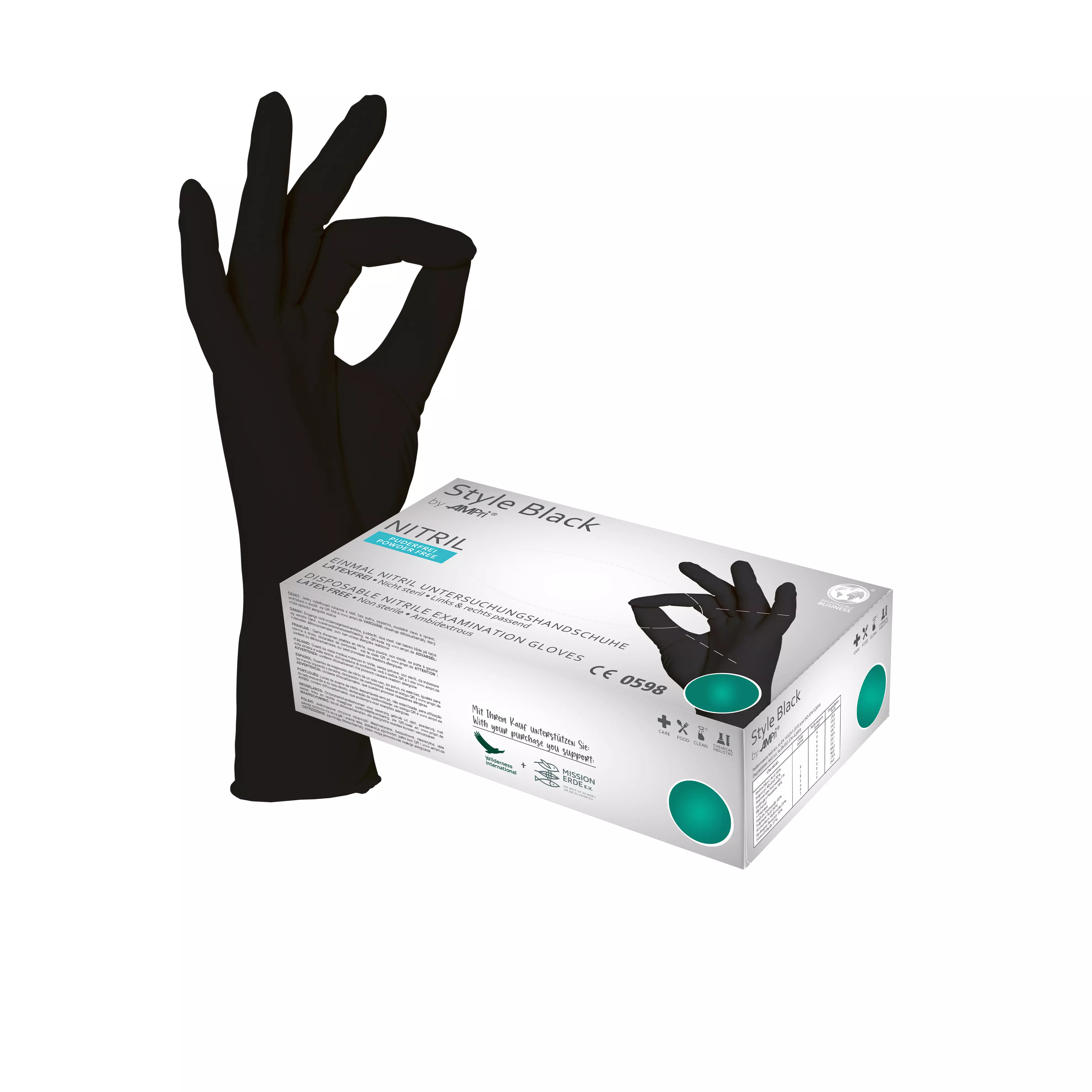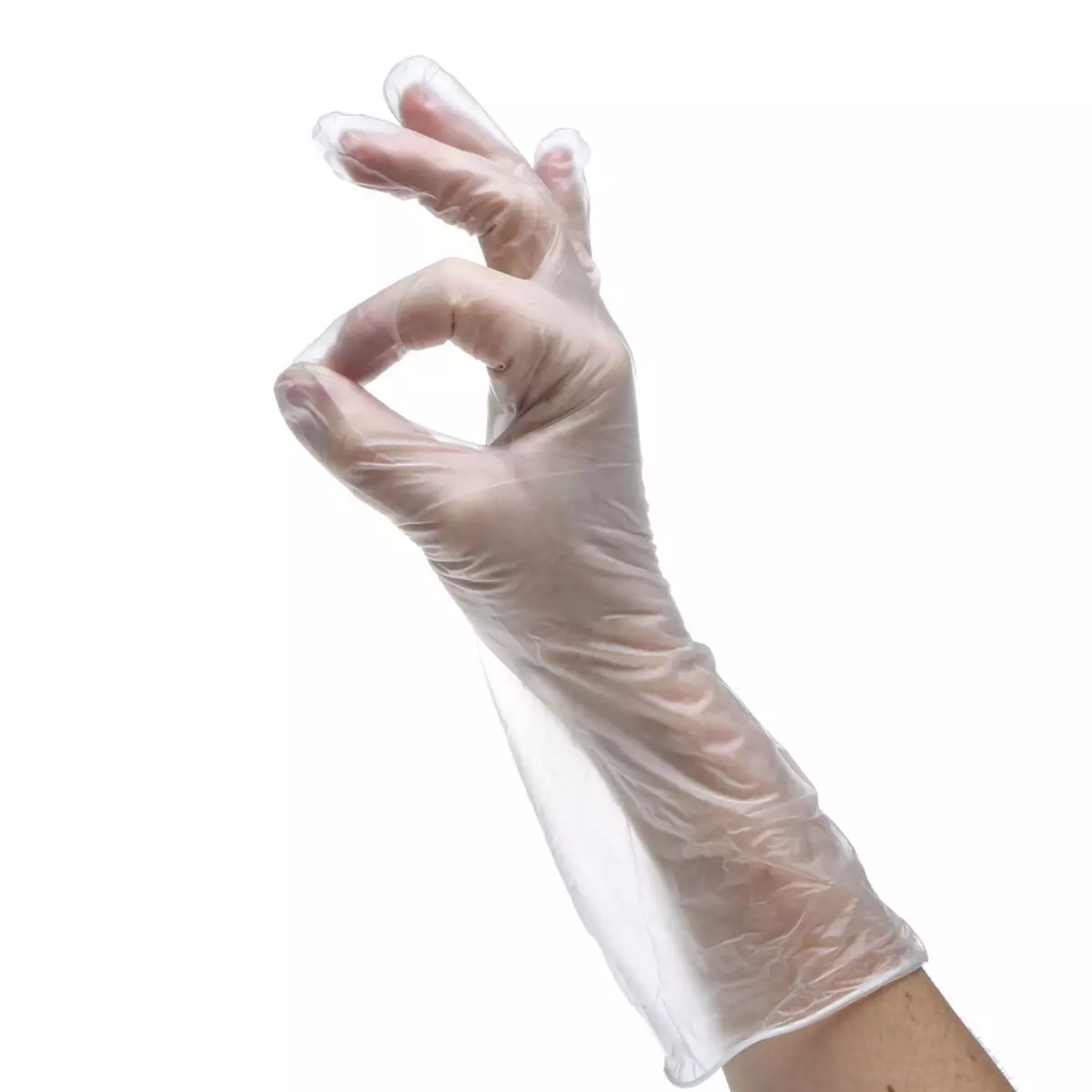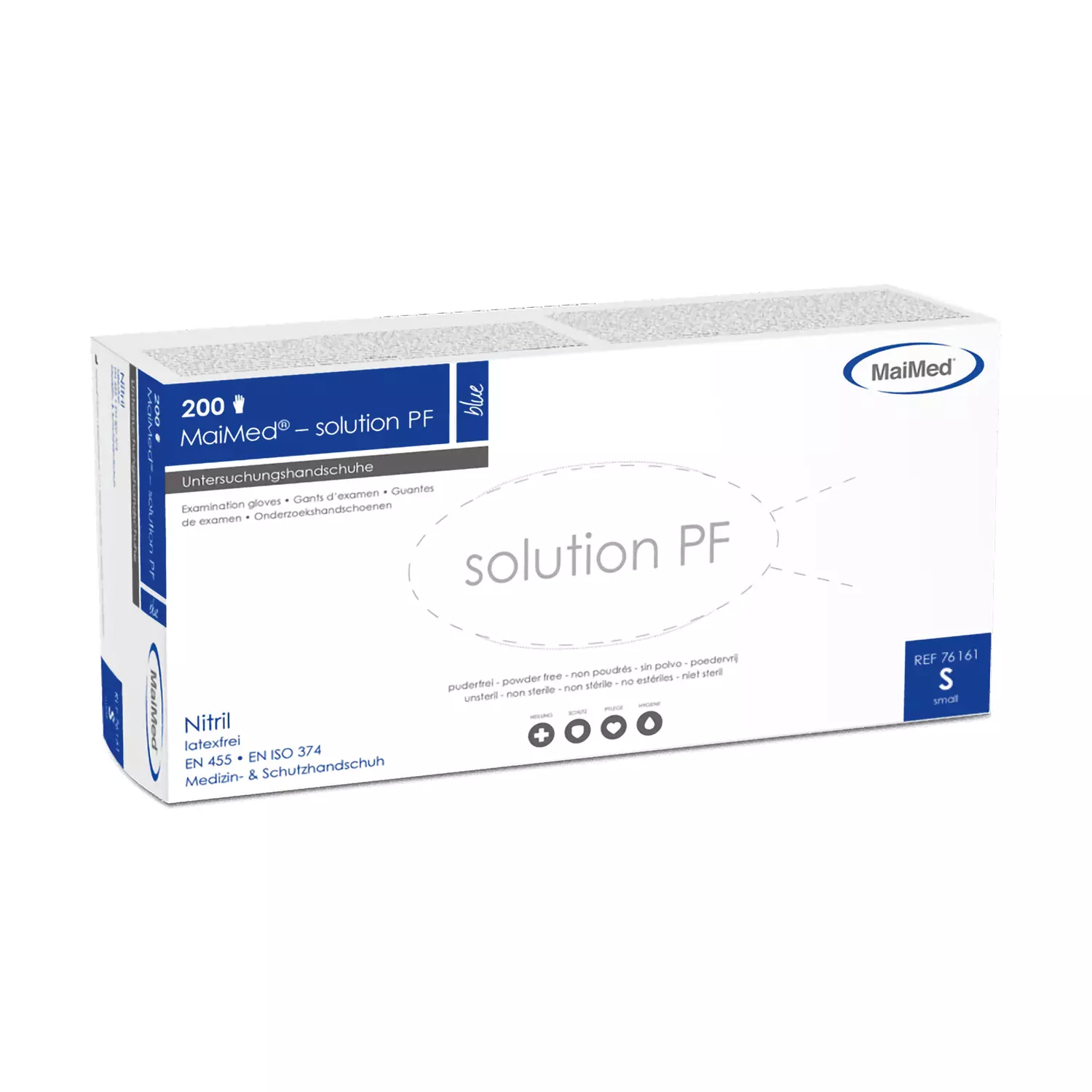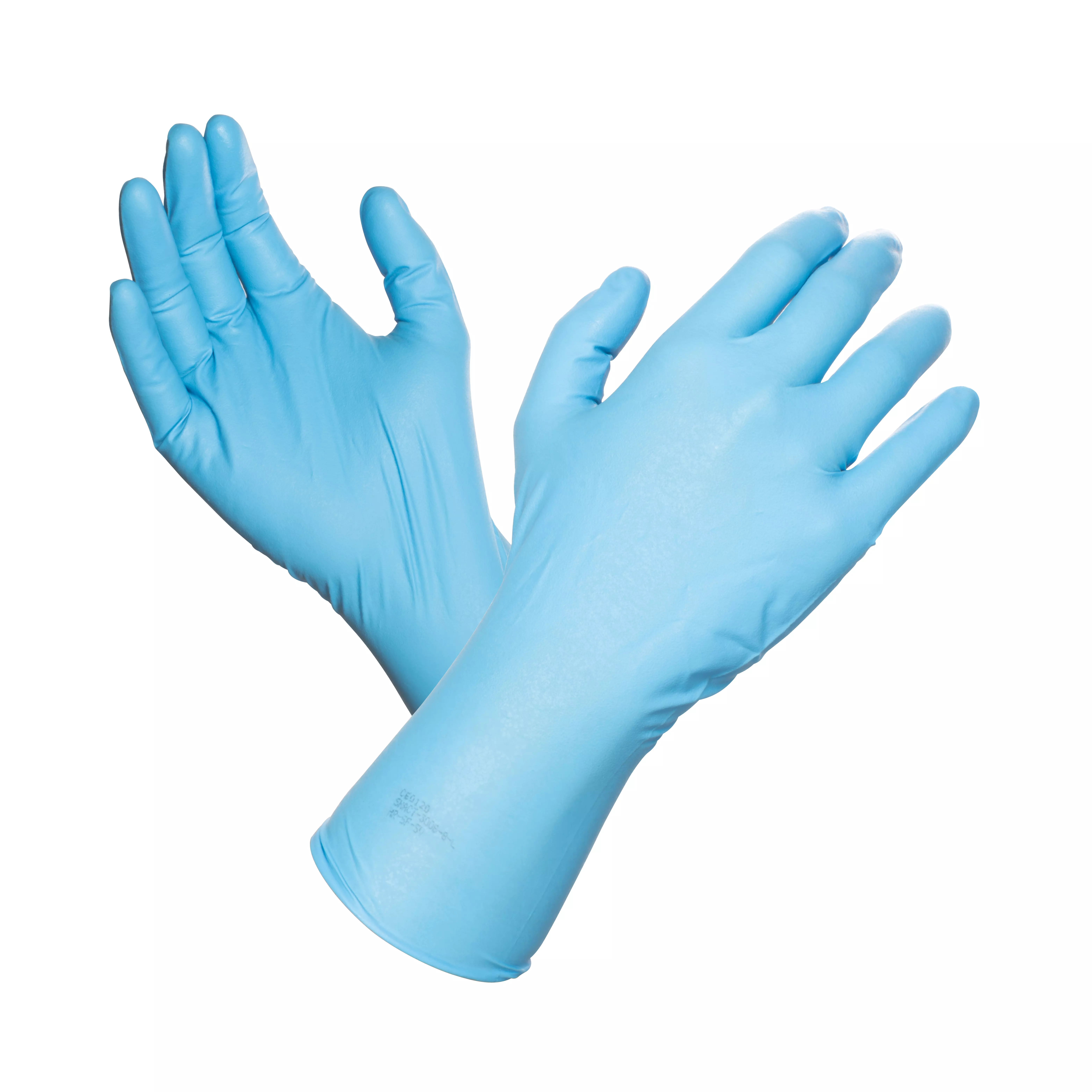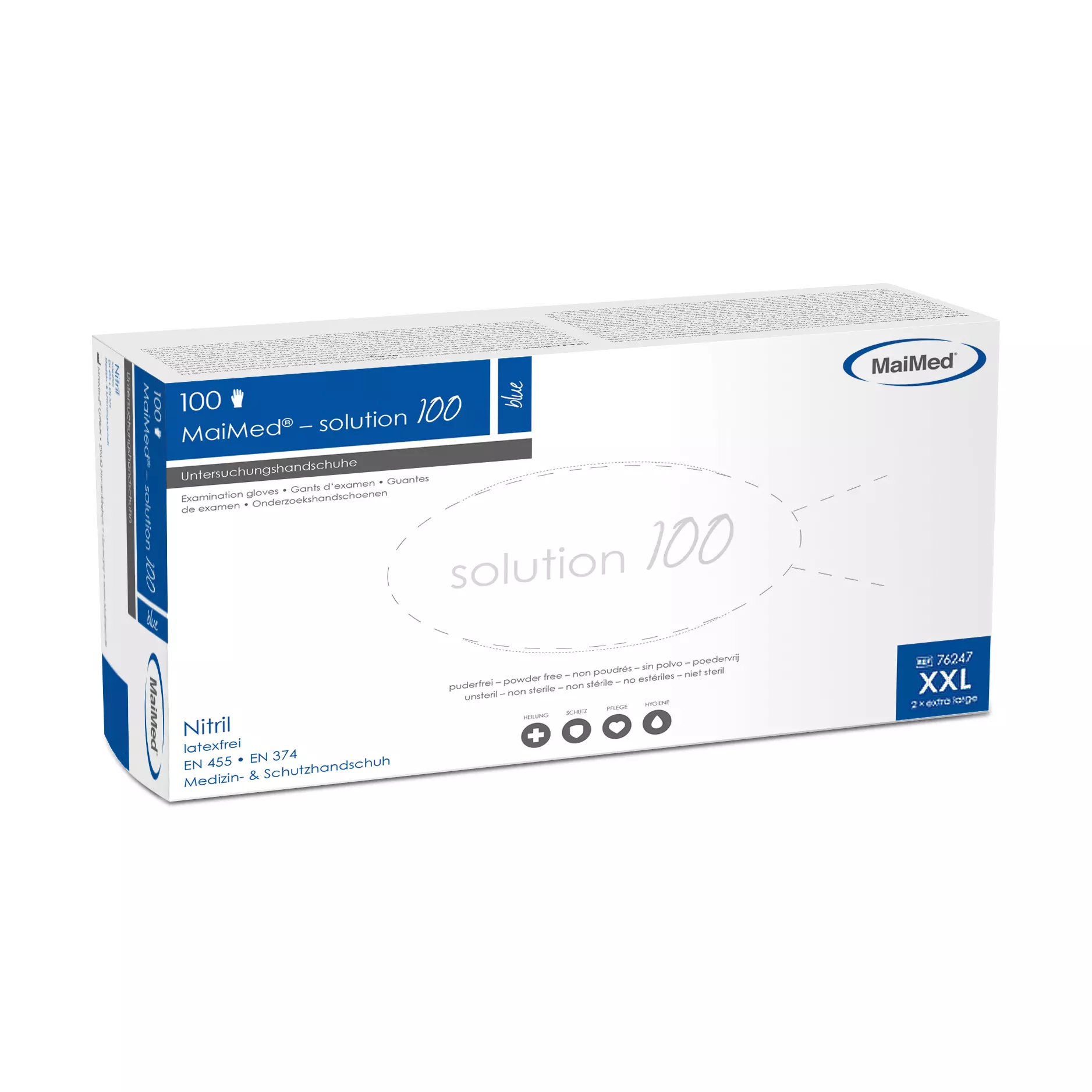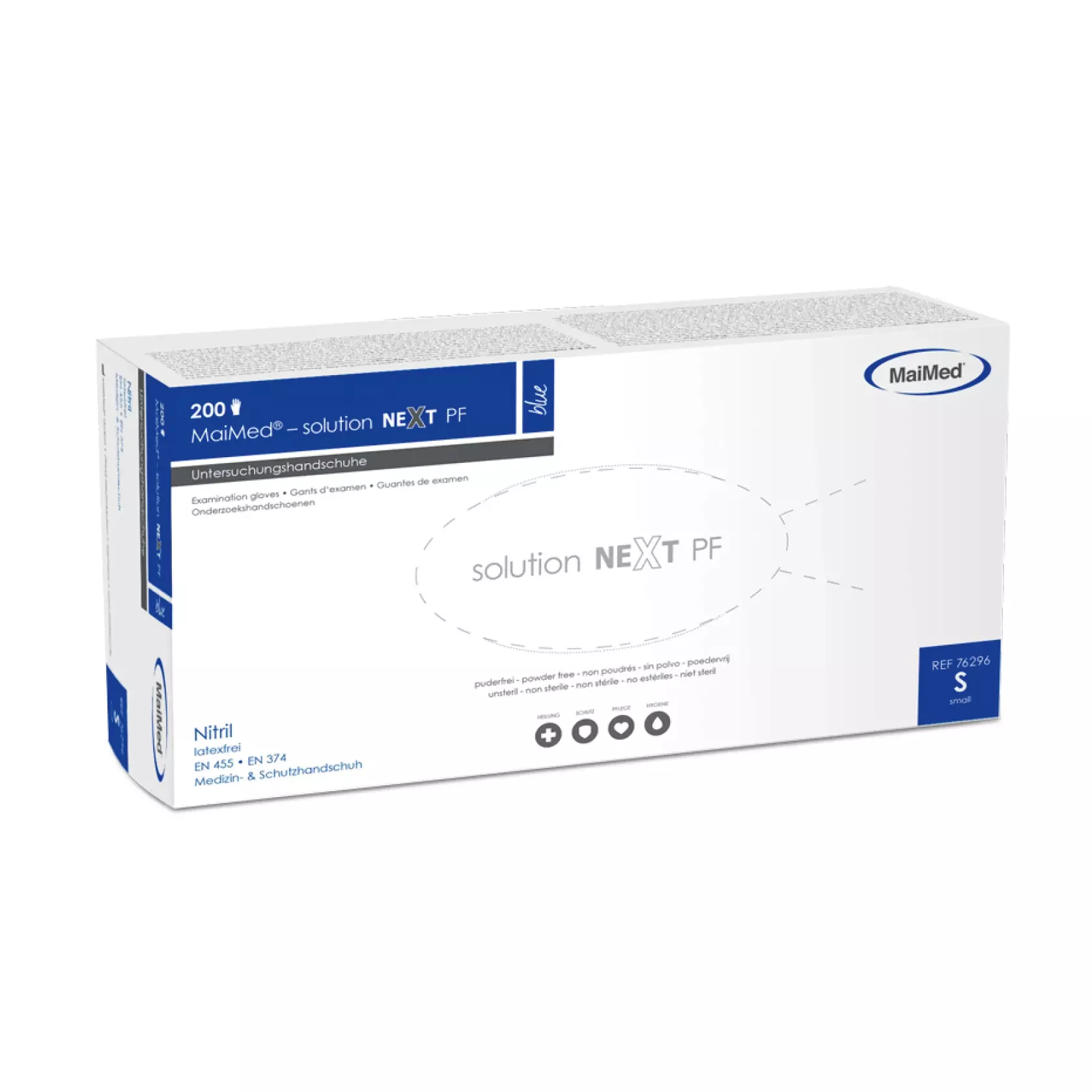Buy disposable gloves
Content: 4 piece (€1.02* / 1 piece)
Available, delivery time: 1-3 days
Content: 100 piece (€0.11* / 1 piece)
Available, delivery time: 1-3 days
Content: 100 piece (€0.19* / 1 piece)
Available, delivery time: 1-3 days
Content: 100 piece (€0.18* / 1 piece)
Available, delivery time: 1-3 days
Content: 100 piece (€0.13* / 1 piece)
Available in 3 days, delivery time 1-3 days
Content: 100 piece (€0.10* / 1 piece)
Available, delivery time: 1-3 days
Content: 200 piece (€0.08* / 1 piece)
Available, delivery time: 1-3 days
Content: 50 piece (€0.40* / 1 piece)
Available, delivery time: 1-3 days
Content: 100 piece (€0.16* / 1 piece)
Available, delivery time: 1-3 days
Content: 200 Pack (€0.10* / 1 Pack)
Available, delivery time: 1-3 days
Zum Schützen der Hände und der Haut sind Einmalhandschuhe oder auch Einweghandschuhe für jede Branche geeignet. Die gängigen Modelle aus Latex, Vinyl und Nitril bringen dabei jeweils geringfügig unterschiedliche Eigenschaften mit. Ungepuderte Modelle sind hinsichtlich des Allergiepotenzials besser geeignet. Einmalhandschuhe werden in den unterschiedlichsten Branchen vor allem aber in der Pflege und der Medizin eingesetzt.
Was macht einen guten Einmalhandschuh aus?
Einmalhandschuhe können als Schutzhandschuhe täglich getragen werden. Sie dienen nicht nur dem Eigenschutz von Händen und Haut, sondern schützen auch, hygienisch gesehen, Menschen im Umfeld sowie Produkte und Gegenstände. Alle Einmalhandschuhe bei WERO sind puderfrei.
Generell gilt: Einmalhandschuhe besitzen einen sehr hohen Tragekomfort und ein perfektes Tastempfinden. Das weiche Material lässt den Handschuh angenehm auf der Haut wirken und passt sich optimal der Handform an. Abhängig vom Material sind die Handschuhe je nach Modell weniger oder mehr dehnbar, strapazierfähig und reißfest. Einmalhandschuhe sollten frei von gesundheitsschädlichen Weichmachern sein, um auch für die Zubereitung und den Umgang mit Lebensmitteln geeignet zu sein.
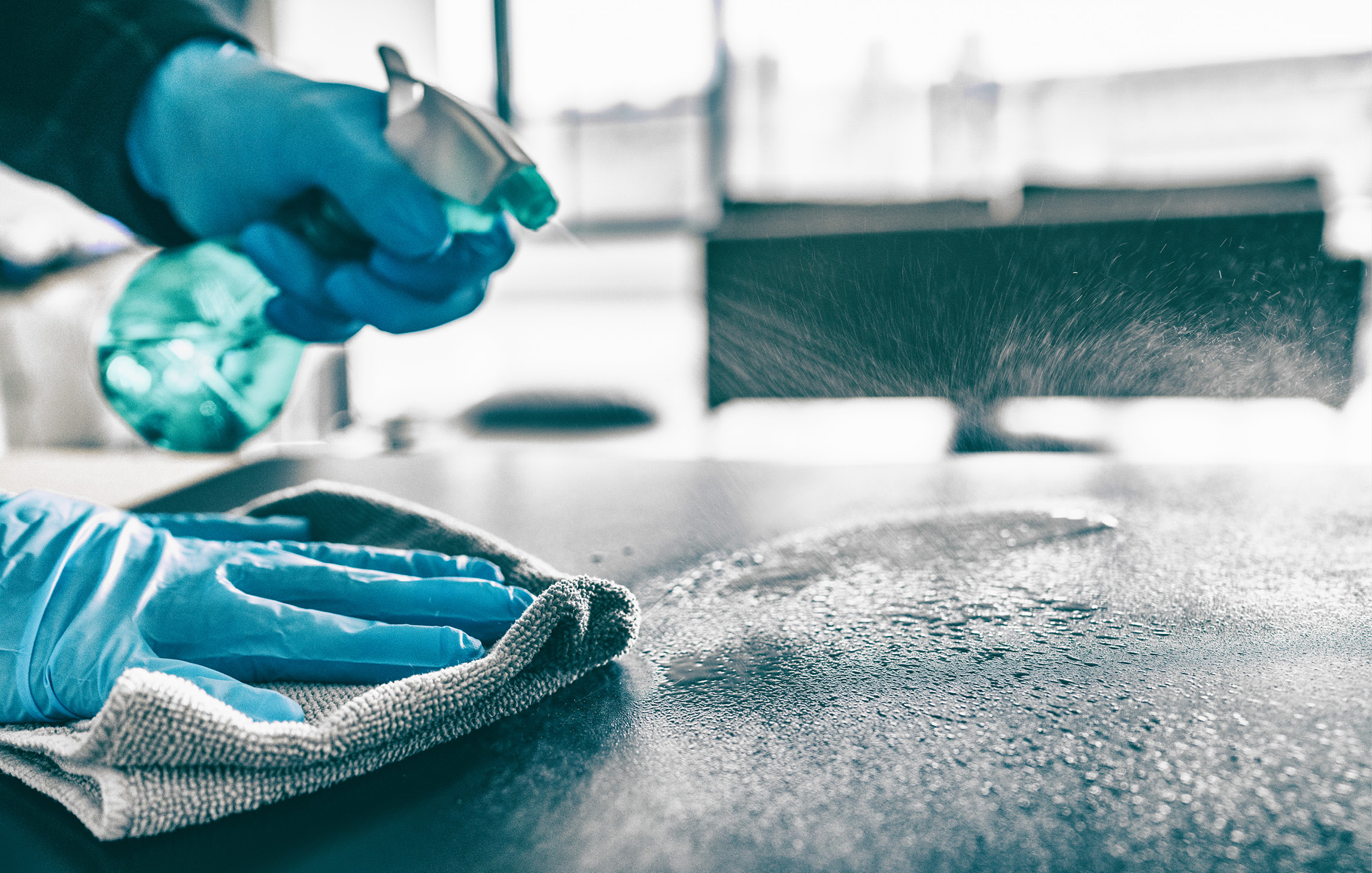
Die richtige Größe von Einmalhandschuhen ermitteln
Um den höchstmöglichen Tragekomfort und Schutz durch Einmalhandschuhe zu gewährleisten, ist es entscheidend, die richtige Größe zu ermitteln. Die Passform sollte weder zu eng sein, um die Blutzirkulation nicht zu behindern, noch zu locker, um ein Verrutschen zu vermeiden. In der Regel sind Einmalhandschuhe in den Größen XS bis XL erhältlich.
Um Ihre Größe zu finden, messen Sie den Umfang Ihrer Hand über den Knöcheln ohne den Daumen und vergleichen Sie das Maß mit den Größentabellen der Hersteller. Bedenken Sie, dass die Größenangaben leicht variieren können, daher ist es ratsam, bei einem neuen Produkt eine Probe zu tragen, bevor größere Mengen gekauft werden.
| Handumfang (cm) | 17,5 | 18 | 19 | 20,5 | 22 | 23 | 24 | 26 | 27 | 27,5 | 28 |
|---|---|---|---|---|---|---|---|---|---|---|---|
| Größe | S | S | S | S | M | M | L | L | XL | XL | XXL |
| Größennummer | 6 | 6,5 | 7 | 7,5 | 8 | 8,5 | 9 | 9,5 | 10 | 10,5 | 11 |
Einmalhandschuhe aus Latex, Vinyl oder Nitril – wo liegen der Unterschiede?
Man unterscheidet in der Regel zwischen drei Arten von Einmalhandschuhen. Die Unterscheidung findet anhand des Materials statt, aus dem der Handschuh hergestellt wird. Die gängigsten Materialien sind Latex, Vinyl und Nitril. Bis vor wenigen Jahren waren Latex und Vinyl noch die bekanntesten Materialien. Nitril ist noch recht neu und konnte sich bereits in vielen Bereichen durchsetzen, da das Material sich auch für Allergiker gut eignet und sehr beständig gegen viele Chemikalien und Öle ist. Welches Material das richtige ist, hängt jedoch auch sehr stark vom Einsatzgebiet ab.
Latexhandschuhe
Untersuchungshandschuhe aus Latex waren früher der Klassiker. Häufig kann man zwischen gepuderten und ungepuderten Handschuhen aus Latex wählen. Da jedoch gepuderte Handschuhe ein noch höheres Risiko einer Latexallergie bergen, werden zunehmend nur noch ungepuderte Latexhandschuhe hergestellt. Der Vorteil von Einmalhandschuhen aus Latex liegt in der Dehnbarkeit. Zudem sind sie sehr reißfest, verhältnismäßig dick und strapazierfähig.
Vinylhandschuhe
Vinylhandschuhe sind die kostengünstigste Variante. Sie sind im Vergleich zu Einmalhandschuhen aus Latex oder Nitril sehr weich und nicht besonders robust. Häufig kommen Einmalhandschuhe aus Vinyl in der Pflege zum Einsatz – die sehr weiche Konsistenz der Handschuhe sorgt für ein angenehmes Gefühl auf der Haut und besten Tragekomfort.
Nitrilhandschuhe
Die ersten Einmalhandschuhe aus Nitril kamen erst vor einigen Jahren auf den Markt. Nitril ist somit noch der „Newcomer“ unter den Einmalhandschuhen. Nitrilhandschuhe sind gegenüber Latexhandschuhen sehr hautverträglich und lösen keine allergischen Reaktionen aus. Einmalhandschuhe aus Nitril sind dehnbar, reißfest und weisen eine gute chemische Beständigkeit auf. Zudem sind sie besonders gut für den Umgang mit Lebensmitteln geeignet.
Tabellarische Gegenüberstellung der Eigenschaften der Materialien
Diese Tabelle bietet einen Überblick über die wesentlichen Unterschiede zwischen den Materialien, aus denen Einmalhandschuhe hergestellt werden. Die Auswahl sollte basierend auf den spezifischen Anforderungen Ihrer Tätigkeit und persönlichen Vorlieben erfolgen.
| Eigenschaft | Latex | Vinyl | Nitril |
|---|---|---|---|
| Elastizität | Sehr hoch | Gering | Hoch |
| Reißfestigkeit | Hoch | Gering | Sehr hoch |
| Allergiepotential | Hoch (besonders bei gepuderten Handschuhen) | Gering | Sehr gering |
| Chemische Beständigkeit | Gering bis mittel | Gering | Hoch |
| Eignung für Lebensmittel | Ja | Bedingt | Ja |
Schutzanforderungen an einen Einmalhandschuh
Einmalhandschuhe weisen eine einheitliche Form auf und somit links als auch rechts tragbar. Beim Kauf von Einmalhandschuhen hat man die Wahl zwischen gepuderten und ungepuderten Handschuhen. Gepuderte Schutzhandschuhe eignen sich vor allem immer dann, wenn sie sehr oft aus- und Neue angezogen werden. Aber auch Personen mit feuchten, verschwitzten oder nassen Händen sollten eher zu gepuderten Handschuhen greifen. Viele Träger reagieren auf das Puder jedoch allergisch und es kann beim Einatmen Reizungen an den Schleimhäuten bewirken. Das Tragen von ungepuderten Einmalhandschuhe ist vorteilhafter, da das Allergiepotential deutlich geringer ist und das Umfeld, die Kleidung oder das jeweilige Produkt nicht zusätzlich durch das Puder verunreinigt wird.
Einmalhandschuhe sind in Verbandskästen nach DIN 13157 und DIN 13169 zu finden. Zudem erfüllen sie je nach Modell die Normen EN 455 (Medizin) und EN 374 (chemische Risiken – gefährliche Chemikalien und Mikroorganismen). EN 388 (mechanische Risiken) beschreibt die Abriebfestigkeit der Handschuhe. Zusätzlich sind sie mit der PSA Schutzkategorie I ausgezeichnet, die vor geringfügigen Risiken schützt.

Wofür werden Einmalhandschuhe verwendet?
Einmalhandschuhe sind als Schutzhandschuhe für die unterschiedlichsten Bereiche wie bspw. Medizin, Pflege, Industrie, Lebensmittelverarbeitung sowie Chemie, Labor, Reinigung, Friseure und Tattoo Studios geeignet. Die gängigsten Materialien, aus denen Einmalhandschuhe hergestellt werden, sind Latex, Vinyl und Nitril. Bis vor wenigen Jahren waren Latex und Vinyl noch die bekanntesten Materialien. Nitril ist noch recht neu und konnte sich bereits in vielen Bereichen durchsetzen, da das Material sich auch für Allergiker gut eignet und sehr beständig gegen viele Chemikalien und Öle ist. Welches Material das Richtige ist, hängt jedoch sehr vom Einsatzgebiet ab.
Europäische Norm 374 für Einmalhandschuhe
Die Europäische Norm EN 374 ist entscheidend für die Auswahl von Schutzhandschuhen gegen chemische Risiken. Diese Norm legt fest, wie Handschuhe chemischen Gefahren standhalten müssen, und kategorisiert sie entsprechend ihrer Durchlässigkeit, Permeationswiderstand und Degradation. Einmalhandschuhe, die dieser Norm entsprechen, bieten verlässlichen Schutz in Umgebungen, in denen Mitarbeiter mit gefährlichen Chemikalien und Mikroorganismen umgehen.
Die Kennzeichnung auf der Verpackung der Handschuhe informiert über die spezifischen Chemikalien, gegen die sie getestet und zertifiziert wurden, und ist somit ein wichtiger Faktor bei der Auswahl des richtigen Handschuhmaterials für Ihre Sicherheitsbedürfnisse.
Einmalhandschuhe richtig an- und ausziehen
Das korrekte An- und Ausziehen von Einmalhandschuhen ist entscheidend, um Kreuzkontaminationen zu vermeiden.
Zum Anziehen: Stellen Sie sicher, dass Ihre Hände sauber und trocken sind. Fassen Sie den Rand des Handschuhs an der Öffnung und ziehen Sie ihn vorsichtig über die Hand. Achten Sie darauf, dass keine Löcher entstehen und der Handschuh gut sitzt.
Zum Ausziehen: Greifen Sie den Handschuh an der Außenseite des Handgelenks, ohne Ihre Haut zu berühren. Ziehen Sie den Handschuh dann vorsichtig von der Hand, wobei Sie ihn umstülpen, sodass die kontaminierte Seite innen liegt. Entsorgen Sie den Handschuh sofort nach dem Ausziehen gemäß den lokalen Vorschriften und waschen Sie Ihre Hände gründlich.
Einmalhandschuhe richtig entsorgen
Nach der Verwendung von Einmalhandschuhen ist eine ordnungsgemäße Entsorgung entscheidend, um Umweltbelastungen zu minimieren und die Verbreitung von Kontaminanten zu verhindern. Einmalhandschuhe gehören in der Regel in den Restmüll.
Es ist wichtig, sie nicht in die Toilette zu werfen oder zum Recycling zu geben, da dies zu Verstopfungen und zusätzlichen Risiken führen kann. In medizinischen Einrichtungen und Laboren gelten spezielle Vorschriften für die Entsorgung von kontaminiertem Material. Befolgen Sie stets die Richtlinien Ihrer Einrichtung und lokale Vorschriften, um sicherzustellen, dass Einmalhandschuhe auf verantwortungsvolle Weise entsorgt werden.

